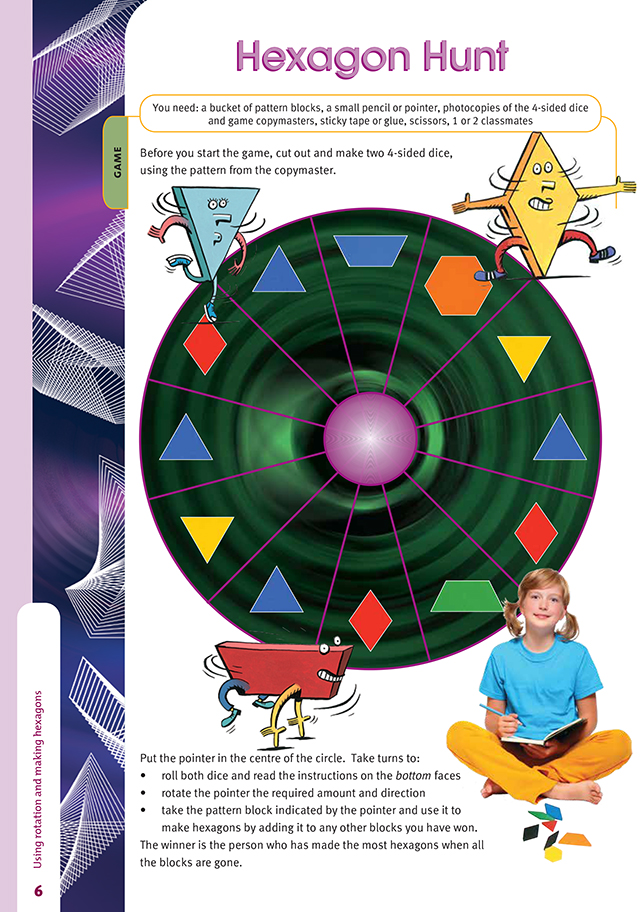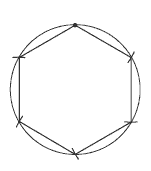This is a level 4 geometry strand activity from the Figure It Out series.
A PDF of the student activity is included.
Click on the image to enlarge it. Click again to close. Download PDF (752 KB)
identify attributes of polygons
rotate an object
bucket of pattern blocks
small pencil or pointer
Copymaster of gameboards and dice
tape or glue
scissors
FIO, Level 4, Geometry, Book One, Hexagon Hunt, page 6
1 or 2 classmates
This game explores the different ways in which pattern blocks can be used to make a hexagon. It reinforces what students learned in Activity One of Shaping Up (page 2 of the studentsÕ book). It could also be used as an introduction to that activity.
Making the two 4-sided dice is an activity in its own right. The simplest method is to photocopy the copymaster outlines onto thin card. Alternatively, the nets for the dice are simple to construct using a compass and ruler.
Encourage your students to make the best dice they can and to label them tidily.
The game board is modelled on a clock face, with 12 divisions. This is the smallest number that can be conveniently divided into quarters, thirds, and halves, following the instructions on the dice. Check that all your students know which direction is clockwise and which is anticlockwise.
When a 4-sided dice has been thrown, the only outcome that can be identified with certainty is which face is on the bottom, so this is the "winning" face of the throw. The students can, of course, lift the dice to find
out what is on this face, but with a little practice, they will be able to "read" it without lifting the dice (by checking the 3 visible faces to find which action is missing).
As an extension, the students could construct their own hexagon within a
circle, as in the diagram. To do this, they use a compass to draw a circle
of suitable size, and then (without changing the radius) they use the compass
to mark off equal arcs around the circumference. They then join the marked
points on the circumference to complete the hexagon. If they make 2
hexagons of the same size, they can divide the second one into a trapezium,
a rhombus, and an equilateral triangle so that they have a complete set of
all the shapes used in the game.
Answers to Activity
Practical activity (making the dice) and a game that involves using rotation and pattern blocks to make hexagons.

